The contents of this article are human-created.
This post may contain affiliate links. Please see my full disclosure for details.
This Warming Roasted Butternut Squash Soup makes a cozy lunch, dinner or side dish that's perfect for autumn and winter. Seasoned with a blend of heat-building spices, roasted garlic, onion and apple, this soup is full of flavour and is sure to nourish you from the inside out!
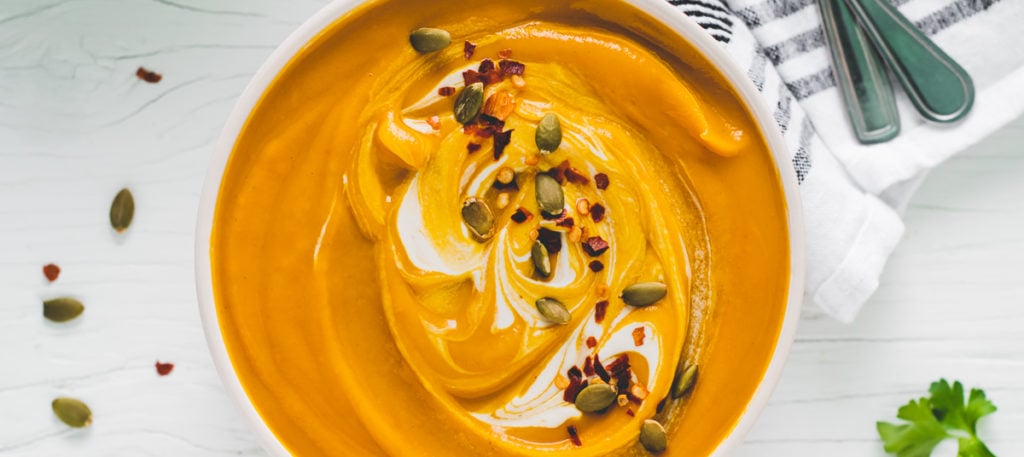
*Nutrition Disclaimer: The information provided on this site is designed for educational purposes only. You should not rely on this information as a substitute for, nor does it replace professional medical advice, diagnosis, or treatment. Please read my disclaimers page for more information.
Butternut Squash Soup is a beloved seasonal dish, and for good reason! It's delicious, warming and full of nourishing goodness.
Because this Roasted Butternut Squash Soup is made right from scratch, it does take some prepping and patience.
However, you might be surprised at how simple it is to make. With just a few steps, you'll have a healthy, hearty and warming soup that's blended to creamy perfection. Plus, with this recipe, you'll have enough to save or serve a crowd!
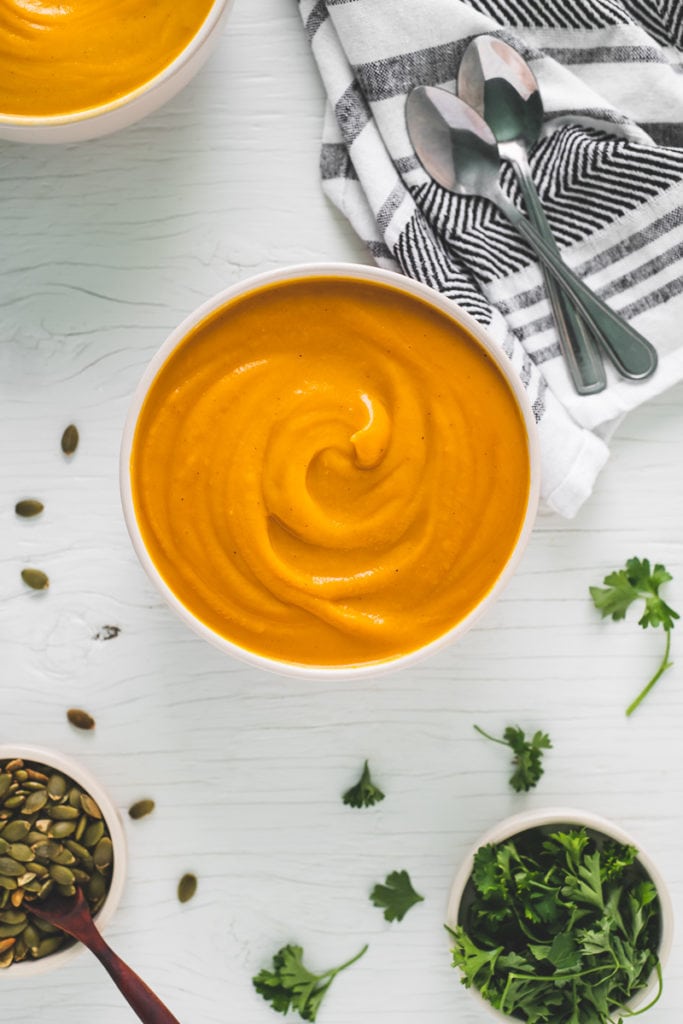
Is Roasted Butternut Squash Soup Healthy?
Roasted Butternut Squash Squash Soup is a nourishing dish that's full of health benefits. This recipe uses all-natural, whole-food ingredients, making it an even healthier option.
Health Benefits
Antioxidant-rich. Butternut squash is rich in carotenes, a powerful group of antioxidants that can offer protection against macular degeneration, heart disease, signs of aging and more.
Immune-supporting. Butternut squash is an excellent source of vitamin C and carotenes that protect the thymus gland, which is essential for proper immune function.
Rich in vitamins and minerals. Butternut squash is a great source of many vitamins and minerals, including vitamins B6, E, potassium, calcium and magnesium. It is especially rich in beta carotene which is converted in the body to vitamin A.
Seasonal Benefits
Autumn is when butternut squash is ready to harvest, which makes it a great time to reap the abundance of nutrients when it's freshly picked. Plus, it's packed with immune-supporting nutrients that can help to keep us healthy during the change of seasons.
Winter is also a wonderful time to continue enjoying butternut squash, especially in the form of warming, slow-roasted soup! Butternut is considered a winter squash because it can be stored for up to six months, just enough to last through until spring.
How to Make Roasted Butternut Squash Soup
Making Roasted Butternut Squash Soup from scratch is not as difficult as one may think. With just a few steps, it comes together in a little over an hour and only requires about 25 - 30 minutes of hands-on time.
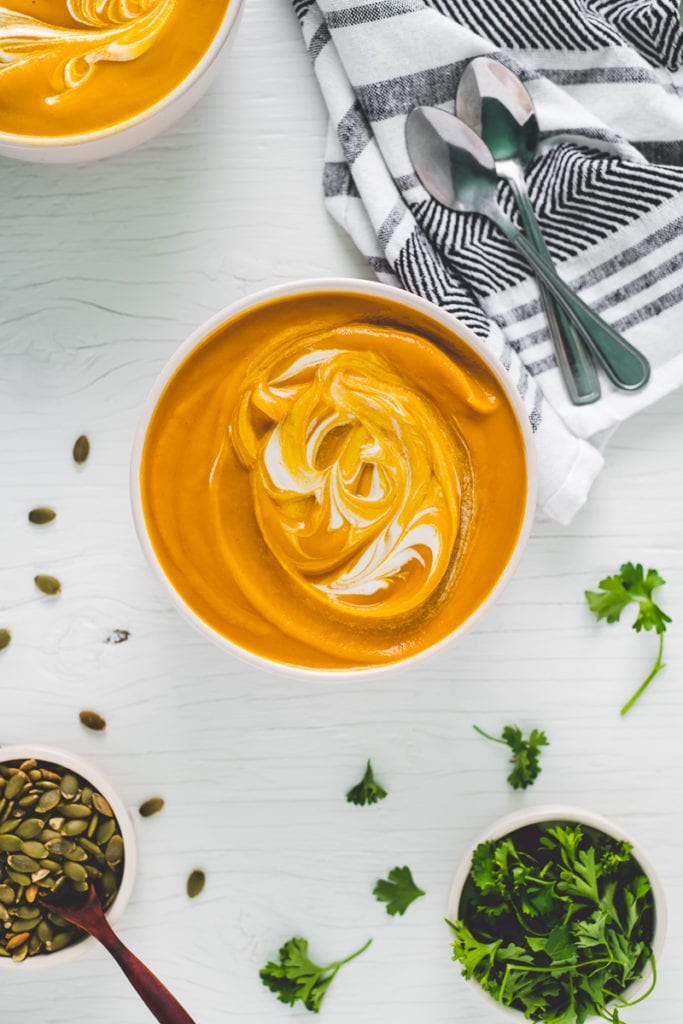
What You Will Need
Equipment
- Oven for roasting.
- Roasting Dish. I find a 13" x 18" dish or baking sheet works best.
- Large soup pot for boiling and warming.
- Immersion blender or blender with a large jug to create a smooth, creamy soup.
- Vegetable peeler to peel the butternut squash.
- Sharp chef's knife to safely slice the squash.
- Sturdy tablespoon to scoop out the seeds and guts.
- Wooden spoon for stirring.
Ingredients
- Butternut squash offers a mild, slightly sweet and subtly nutty pumpkin-like flavour.
- Vegetable Broth or chicken broth can be used. They both offer umami flavour that isn't too overpowering.
- Milk adds extra creaminess that gives this soup a delicious and comforting touch. (I like using Coconut, Tigernut or Almond for a dairy-free version).
- Fresh garlic cloves are roasted with the squash, offering a rich depth of flavour.
- Onion is also roasted with squash and garlic, adding more depth of flavour.
- Red Apple adds natural sweetness, gut-loving pectin and a delicious roasted flavour.
- Extra virgin olive oil prevents the squash, onion, garlic and apple from sticking while roasting. Plus, it adds healthy fats that increase the bioavailability of fat-soluble vitamins, like vitamin A. You can also use pure cold-pressed avocado oil.
- Herbs and spices, including ground cumin, turmeric, nutmeg, coriander and a dash of cinnamon, add extra warmth and a depth of flavour that pair take this soup to the next level of deliciousness.
- Salt and black pepper help to marry the flavours of this soup.
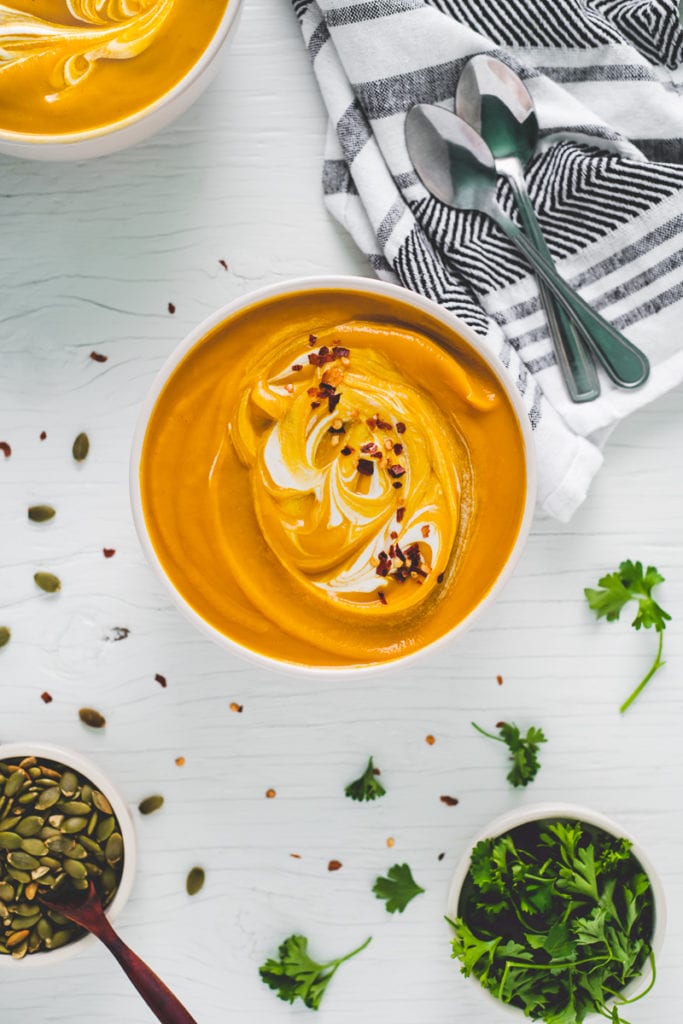
Step 1: Peel & Chop
First, preheat your oven to 350°F and line a baking sheet with unbleached parchment paper. You can also use a glass roasting dish without the parchment.
Next, peel the outer skin of a medium butternut squash (about 4 lbs). Once the butternut is peeled, chop off the ends and carefully slice it in half, longways.
I find it easiest to lay the squash down and start cutting at the top (where it's skinnier). Then, slowly work the knife down to the bottom (where it holds the seeds). Watch the video to see how it's done.
After the squash is sliced in half, scoop out the guts and seeds. If the squash is fresh, you can save the seeds to roast.
However, if the squash has been stored for a few months, it's best not to consume the seeds. Instead, you can wash and dry them for planting in the spring or discard them into the compost.
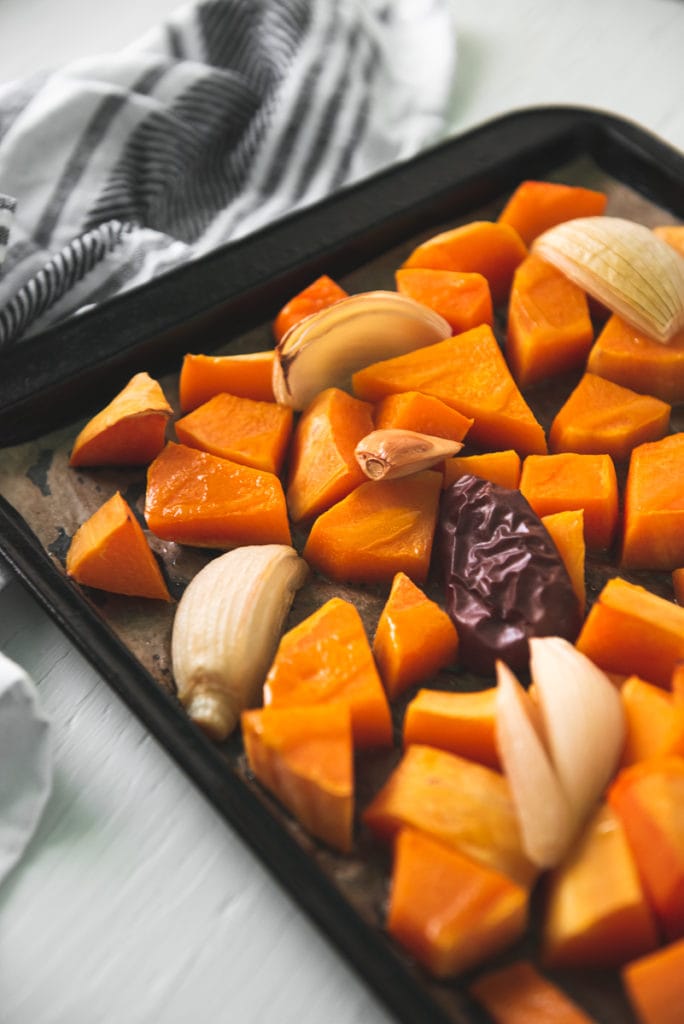
Next, chop the butternut squash into cubes (about 1 inch thick) and spread evenly on the baking sheet. Then, chop the onion into quarters.
Press each garlic clove with the back of a chef's knife and chop in half if they are on the larger side. Then, Chop and core one apple into quarters.
Spread the chopped onion, garlic and apple amongst the squash on the baking sheet and drizzle with oil.
Step 2: Roast
Place in the oven and roast for 35 - 40 minutes or until the squash is tender enough that a fork easily slides through.
Remove from the oven and allow it to cool for a few minutes before handling.
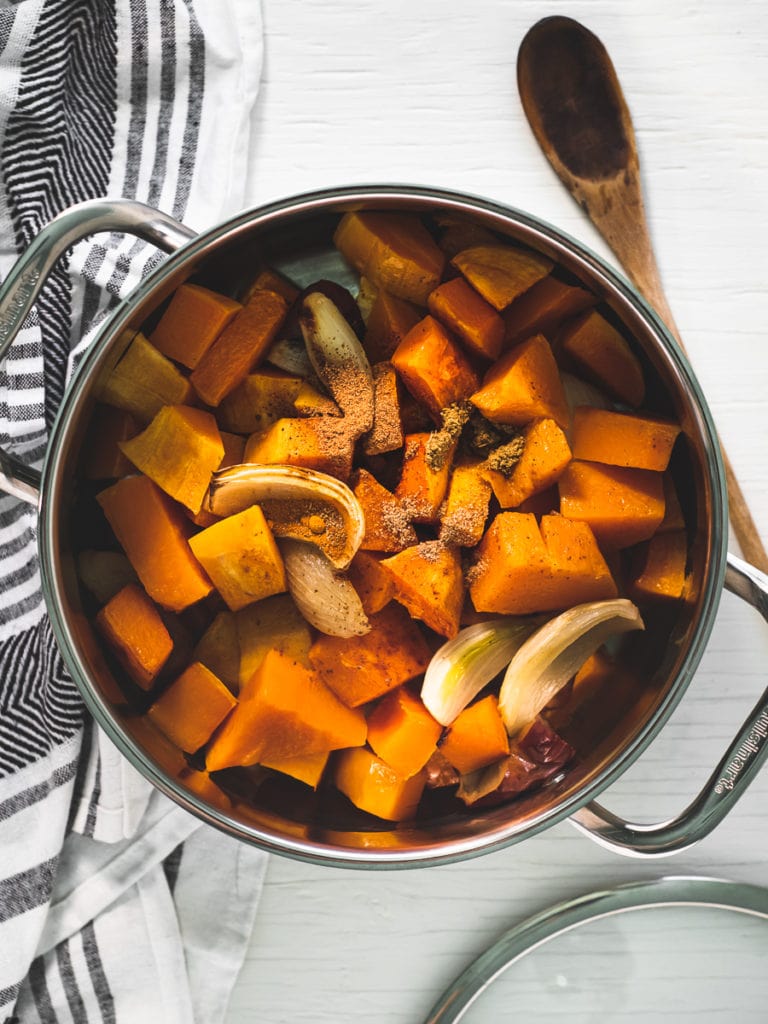
Step 3: Simmer with Spices
Add the roasted squash, onion, garlic, and apple to a large soup pot with the ground cumin, coriander, nutmeg, turmeric, and cinnamon.
Then, pour in the broth and bring to a light boil. Once bubbling, turn the heat down and add the milk. Continue to simmer for about 10 minutes (or until the squash begins to fall apart at the touch). Stir often to prevent the squash from sticking to the bottom.
Stir in the salt and pepper, then remove the pot from the heat and allow it to cool for a few minutes.
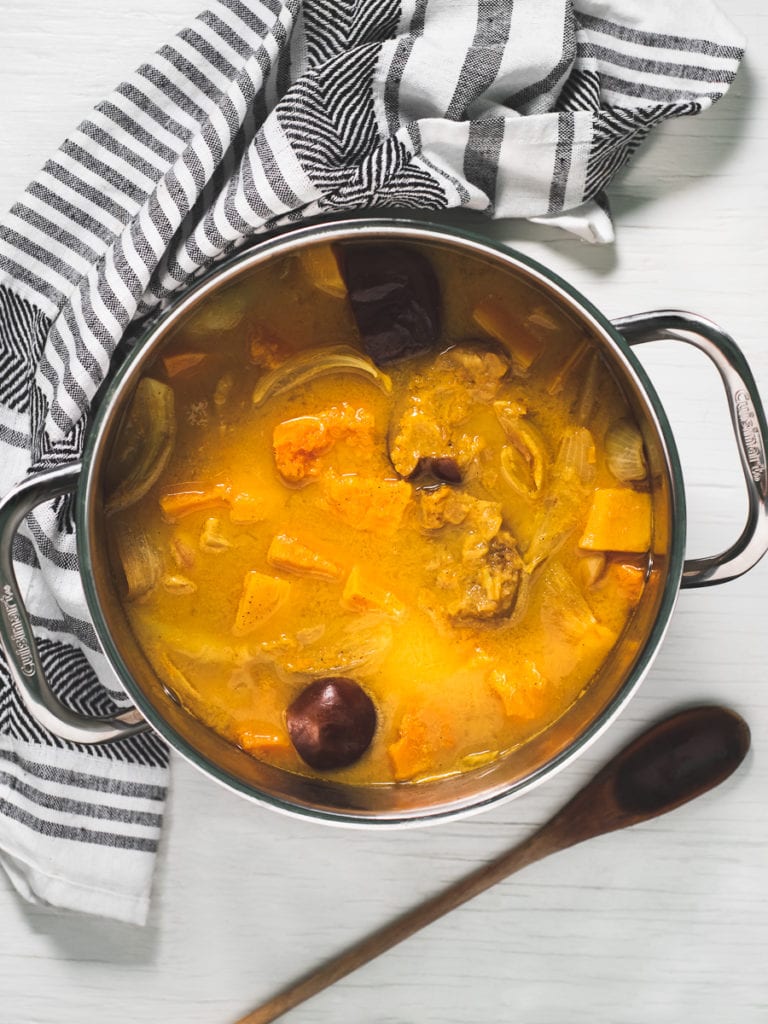
Step 4: Blend
I find it easiest to use an immersion blender so the soup can be blended right inside the pot.
However, you can also use a traditional blender if you have a large enough jug. Depending on the size, it may need to be blended in two batches. If using a plastic blender jug, make sure the soup has cooled before pouring it in.
Blend until smooth and smooth and creamy. It shouldn't take more than a minute or two with an immersion blender or more than 30 seconds in a regular blender.
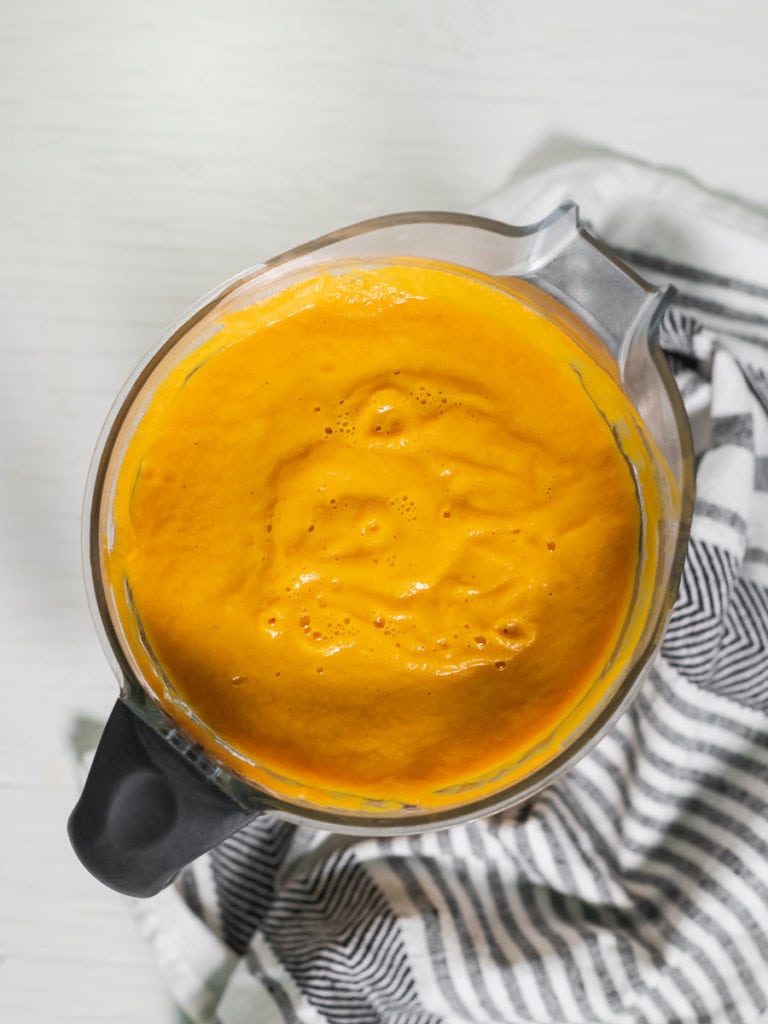
If your soup needs to be reheated after blending, heat over medium-low and stir often. Once it begins to steam or reaches your desired temperature, remove it from the heat and serve immediately.
To make this Butternut Squash Soup even more warming, I love garnishing it with a sprinkle of crushed red pepper flakes.
It's also delicious topped with cultured cashew yogurt, roasted squash or pumpkin seeds and a few sprigs of fresh parsley or microgreens.

Substitutions & Variations
Any milk will work for this recipe. You can make it dairy-rich or dairy-free. I like using homemade almond, tigernut or coconut milk for a dairy-free version.
Omit the spices if you have picky eaters or prefer a milder flavour. This soup still tastes delicious with just the squash, garlic, onion and apple.
Omit the apple if you don't have any on hand or prefer less sugar or sweetness. This soup still tastes just as flavourful without it.
My Top Tips
Use red apple for the best flavour. My favourites to use are red delcious, gala or honey crisp. Green apple tends to overpower the flavour a bit too much.
Blend well for a smooth and creamy texture.
Use organic ingredients, if possible, to avoid harmful pesticides and herbicides. Homegrown is an even better option!
Save the leftovers because this soup tastes even more delicious the next day.
Storing & Saving
As mentioned above, this Roasted Butternut Squash Soup tastes even better as leftovers. Allowing it to sit overnight gives the flavours time to meld and mix, making this a great recipe to prepare ahead of time!
I love including this soup in my winter meal prep for busy weeks or as a make-ahead dish for dinner parties.
This Roasted Butternut Squash Soup will last up to 3 - 4 days in the refrigerator in a well-sealed, airtight container. You can also freeze it for up to 3 months.
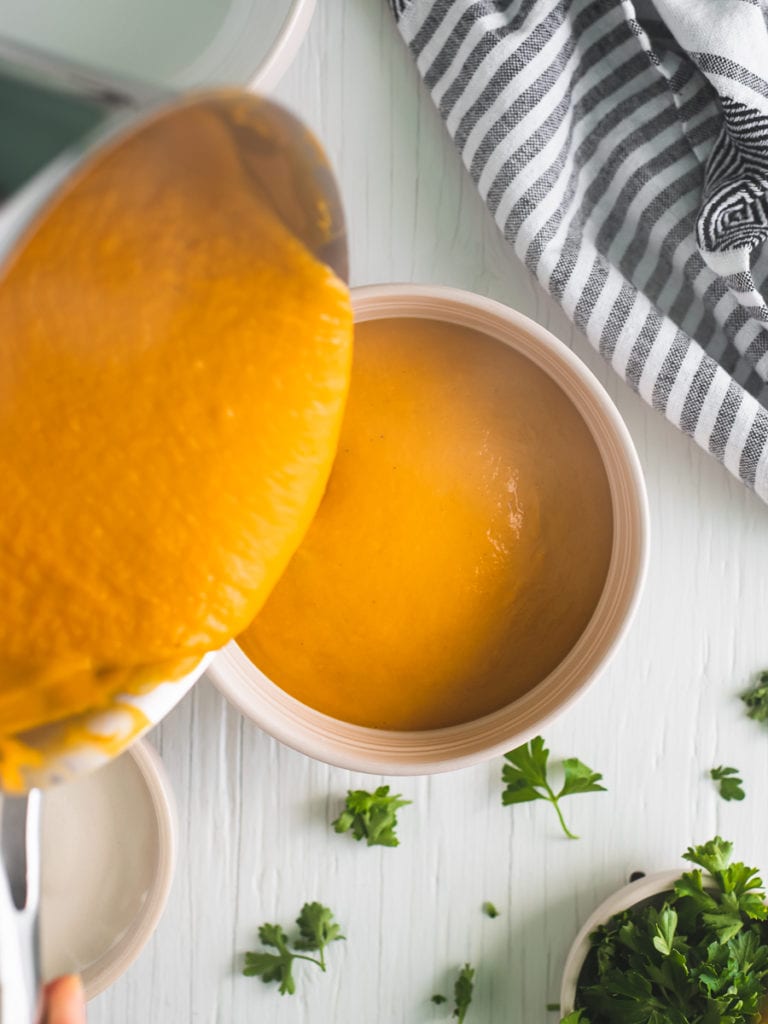
FAQs
One batch of this Butternut Squash Soup recipe yields about 2 quarts (or 8 cups) and serves 6 to 8 people. If you need to make more, you can toggle the switch in the recipe card below to double or triple the recipe.
Yes, this Butternut Squash soup can be frozen for up to 3 months in the freezer. Make sure it is well-sealed in an airtight container to avoid contamination and freezer burn. Also, allow it to fully cool before placing it in the freezer.
If you are freezing it in glass, do not fill it right to the top. Leave at least an inch of room to allow for expansion so the glass does not crack.
Yes, other winter squashes, like buttercup, acorn or even pumpkin can be used. However, you will not need to peel them. Simply slice in half, scoop out the seeds and guts and place face-down on the baking sheet. Once roasted, allow it to cool fully. Then, scoop the squash from the outer skin and add it to the pot with spices and continue to cook as directed.
More Warming Recipes
Warming Roasted Butternut Squash Soup (With Apple)
Print RecipeEquipment
- Oven
- 13 x 18 Baking Sheet or Roasting Dish
- Large Soup Pot
- Immersion Blender or Regular Blender
- Vegetable peeler
- Sharp Chef's Knife
- Metal Table Spoon
- Wooden Spoon
Ingredients
- 1 medium-large Butternut Squash (or 2 small (about 4 lbs))
- 2 cups Vegetable Broth (or Chicken Broth)
- 2 cups Milk (I like using Coconut, Tigernut or Almond)
- 1 Red Apple (I like using Gala, Honey Crisp or Red Delicious)
- 3-4 Garlic Cloves
- 1 medium Onion
- 2 - 3 tablespoon Extra Virgin Olive Oil (or Pure Cold-Pressed Avocado Oil)
- ½ teaspoon Ground Nutmeg
- ½ teaspoon Ground Cumin
- ¼ teaspoon Turmeric Powder
- ¼ teaspoon Ground coriander
- Dash of Ground Cinnamon
- 1 teaspoon Himalayan Salt (or Other Natural Mineral Salt)
- Dash of Black Pepper
Instructions
- First, preheat your oven to 350°F and line a baking sheet with unbleached parchment paper. You can also use a glass baking dish without the parchment.Next, peel the butternut squash and chop off the ends. Then, carefully slice it in half, longways. I find it easiest to lay the squash down and start cutting at the top (where it's skinnier). Then, slowly work the knife down to the bottom (where it holds the seeds). Watch the video to see how it's done.After the squash is sliced in half, scoop out the guts and seeds. If the squash is fresh, you can save the seeds to roast. However, if the squash has been stored for a few months, it's best not to consume the seeds. Instead, you can wash and dry them for planting in the spring or discard them into the compost.Next, chop the butternut squash into cubes (about 1 inch thick) and spread evenly on the baking sheet. Then, chop the onion into quarters.Press each garlic clove with the back of a chef's knife and chop in half if they are on the larger side. Then, Chop and core one apple into quarters.Spread the chopped onion, garlic and apple amongst the squash on the baking sheet and drizzle with olive or avocado oil.
- Place in the oven and roast for 35 - 40 minutes or until the squash is tender enough that a fork easily slides through.Remove from the oven and allow it to cool for a few minutes before handling.
- Add the roasted squash, onion, garlic, and apple to a large soup pot with the ground cumin, coriander, nutmeg, turmeric, and cinnamon.Then, pour in the broth and bring to a light boil. Once bubbling, turn the heat down and add the milk. Continue to simmer for about 10 minutes (or until the squash begins to fall apart at the touch). Stir often to prevent the squash from sticking to the bottom.Stir in the salt and pepper, then remove the pot from the heat and allow it to cool for a few minutes.
- find it easiest to use an immersion blender so the soup can be blended right inside the pot. However, you can also use a traditional blender if you have a large enough jug. Depending on the size, it may need to be blended in two batches. If using a plastic blender jug, make sure the soup has cooled before pouring it in.Blend until smooth and smooth and creamy. It shouldn't take more than a minute or two with an immersion blender or more than 30 seconds in a regular blender.If your soup needs to be reheated after blending, heat over medium-low and stir often. Once it begins to steam or reaches your desired temperature, remove it from the heat and serve immediately.To make this Butternut Squash Soup even more warming, I love garnishing it with a sprinkle of crushed red pepper flakes. It's also delicious topped with cultured cashew yogurt, roasted squash or pumpkin seeds and a few sprigs of fresh parsley or microgreens.This Roasted Butternut Squash Soup will last 3 - 4 days in the refrigerator in a well-sealed, airtight container. You can also freeze it for up to 3 months.



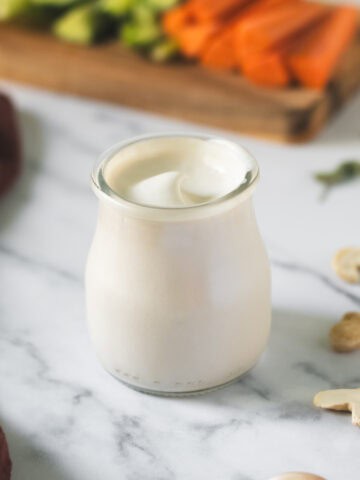
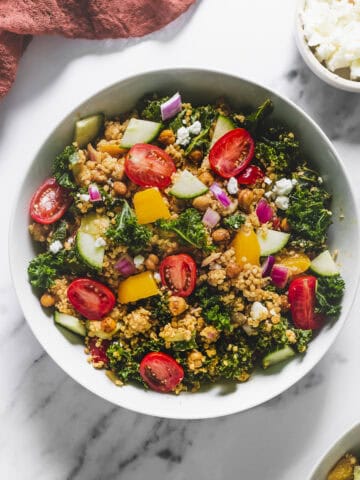
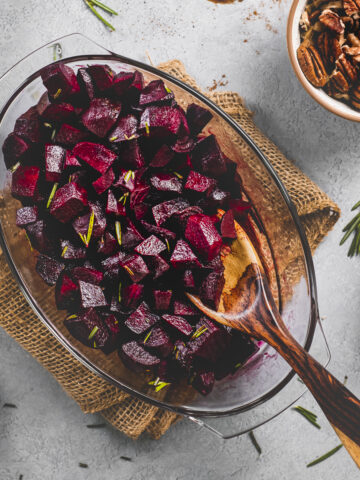
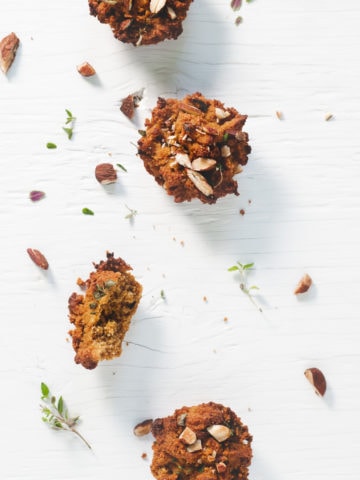
Pam says
Great Recipe. So quick and easy to make. Tastes delicious and warms the whole body.
Jen says
Thank you for sharing this delicious recipe. So comforting and warm for the cool months.
Michelle McCowan says
You're very welcome! I'm so happy you enjoyed 🙂